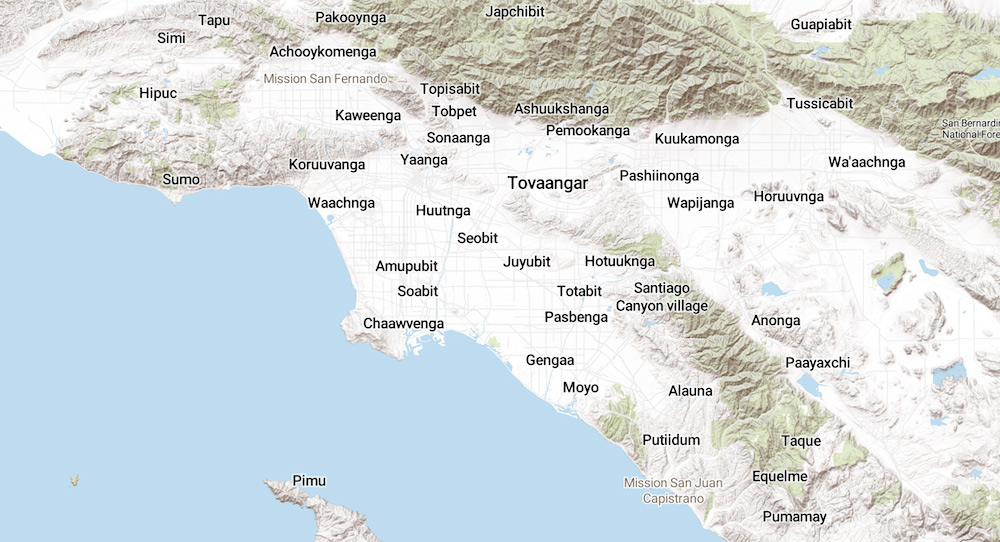Reading
About these plans for an international airport near Machu Picchu. Topical, off the back of the things I was chatting about last week around the impact of tourism; this feels like it’s taking it to another level.
Bulldozers are already scraping clear millions of tonnes of earth in Chinchero, a picturesque Inca town about 3,800 metres above sea level that is the gateway to the Sacred Valley. This area was once was the heartland of a civilisation that stretched from modern-day Colombia to Argentina, and in the 15th century was the world’s largest empire.
I would LOVE to go Machu Picchu, as obviously many many other people would, but this ain’t it, Chief. Peru is more than Machi Picchu, and I think that an idea like this which is set up to effectively channel visitors to one specific thing, minimising the likelihood that they’ll encounter anything else the country has to offer, is awful. Surely it wont go ahead(?)
Mapping the Tongva villages of L.A.’s past. This interactive article/map covers the original inhabitants of Los Angeles, the Tongva. Back when they called it Tovaangar. I’ll be honest, this is the first time I’d heard of the Tongva, and that’s a shame because it’s fascinating. Would’ve given me a different view about exploring L.A… Like, who knew there was an ancient spring (that still flows) just off Wilshire Blvd in West L.A.(?) Similarly, I’d never really considered the specific origin of place names like Topanga or Cahuenga but there you go – Tongva heritage.
This map of Tovaangar draws upon the work of a number of scholars, including Steven Hackel, Stephen O’Neil, Nat Zappia and Jeanette Zerneke, whose Early California Cultural Atlas, a spatial-history project funded by the National Endowment for the Humanities, and Early California Population Project, developed by the Huntington Library, are essential resources.

And as it was Global Accessibility Awareness Day last week, here’s a selection of related articles that I enjoyed… some are old, some are new.
- Building a more helpful Google for everyone
- Web Content Accessibility Guidelines 2.1 – for People Who Haven’t Read the Update
- The Web Accessibility Introduction I Wish I Had
- The Importance of Manual Accessibility Testing
- Accessibility tech has a lot of unfinished business to get right
- Making accessibility easy to learn, use, build and master
- and of course, my own humble contribution to the chat, which I’ll keep on putting forward because it took me AGES to pull together ;) – Keeping accessibility front of mind & the curb-cut effect
There were so so so many more – if you take a look at the #gaad tag on Twitter, you’ll find plenty. Even if you’re already aware, there’s always something to learn and something new to look into.
Listening to
This American Life 674: Get a Spine. There’s a thing about that time Dan Harmon was a massive prick and eventually apologised for being one, and there’s a thing about the attitude of the scientific community towards invertebrates. It’s the second part which is more interesting. This dude looked at the number of publications in Animal Behaviour, a journal about animal behaviour, in order to work out if 'bird papers got published more than spider papers’. Long story short, they do.
He discovered that just 10 species of animals represented a shockingly high proportion of papers published– 15% of all papers. That means one in seven papers is dedicated to just 10 species out of millions.
“You know, we talk about the natural world and all the animals in it and all the things they do. But if you think you know the world because you’ve studied hundreds and hundreds of birds and mammals, maybe you don’t know the world. Like, maybe it isn’t that bad but maybe the whole world is different than we thought because we just haven’t been focusing our attention on the bulk of things. Yeah, like we’ve been only looking at just a tiny sliver and we thought it was the whole world.”
There are valid reasons for the imbalance, but generally, it still seems a bit unfair. He makes a valiant attempt to shift that balance, and I’ll leave you to work out if it was successful or not.

